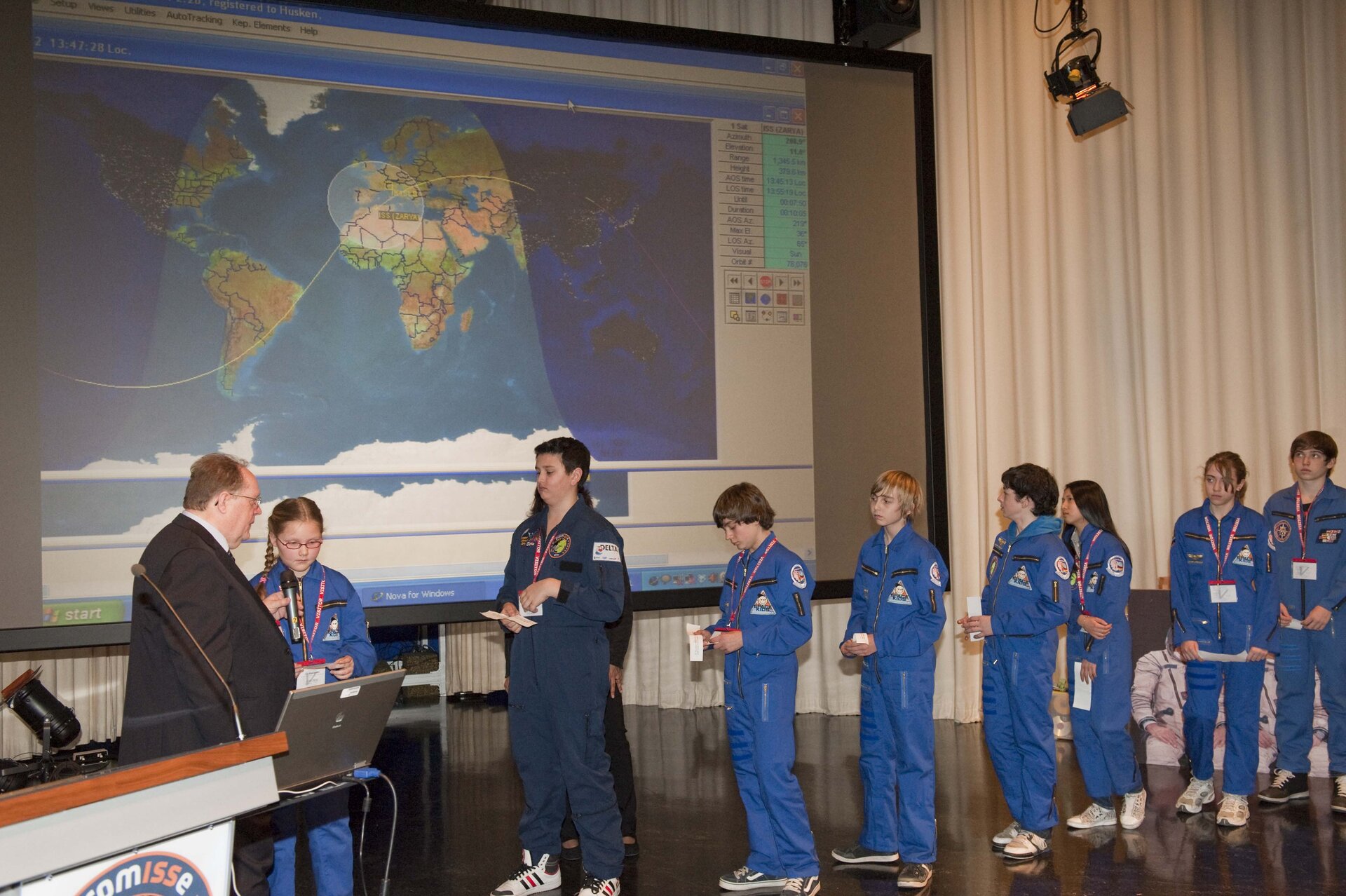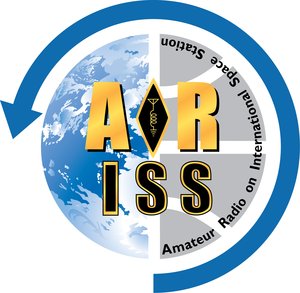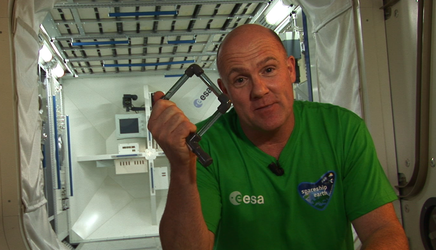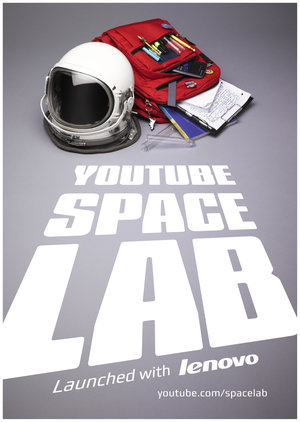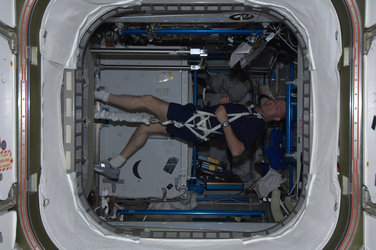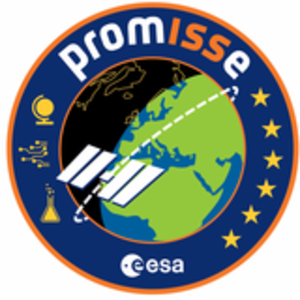André, my name is Isabelle, do you get homesick? Over...
Space is not all high-tech. Standard radios operated by amateur enthusiasts can be used to communicate with the International Space Station. ESA astronaut André Kuipers talked to children this week using handheld-radios.
Students, aged 11–14, from three international schools in the Netherlands were invited to submit a question they would like to ask André.
ARISS, or Amateur Radio on the International Space Station, is an organisation that promotes contact with the Space Station through basic radio technology. Volunteers set up the radio contact yesterday between André and the students in the Erasmus Centre of ESA’s technical site in Noordwijk, the Netherlands.

Since the Space Station circles Earth at over 28 000 km an hour, only ten minutes of direct radio contact are available at a time, after which it flies out of range.
The tension grew as the Station flew into range of a home-built relay station in northern Italy. Everything went as planned and reception was loud and clear as André used his call sign ‘PI9ISS’ to make contact.
André had time to answer almost all the children’s questions. He replied to Isabelle Meyers from the American School of The Hague: “It is so special here in the Space Station, the floating and the view of Earth is so fantastic that I do not get homesick.”
Listen to the full radio contact by clicking on the play button.
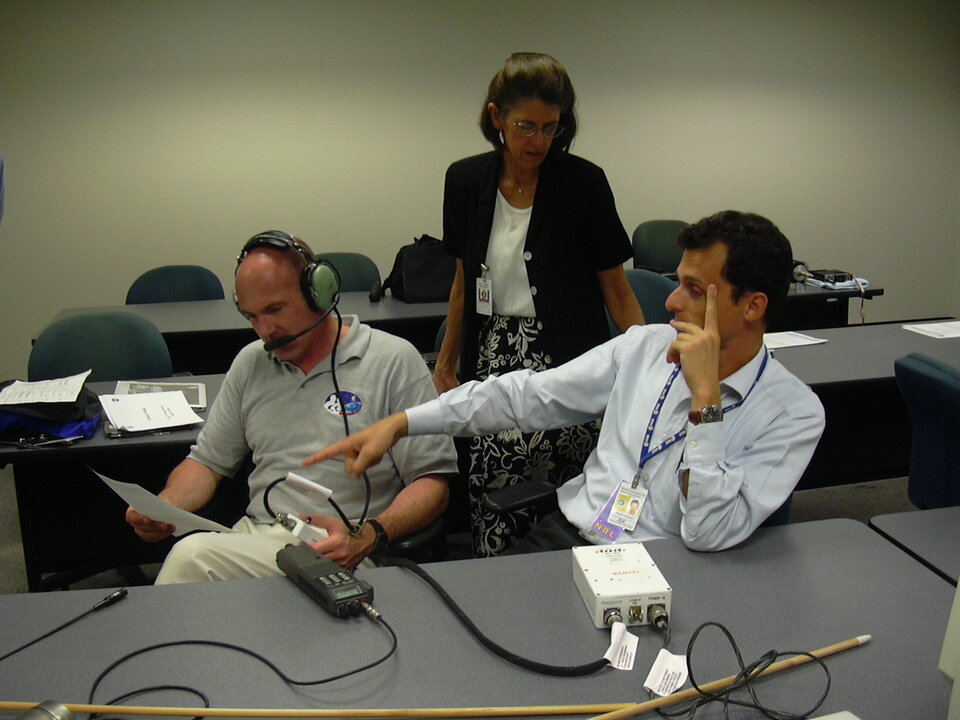
The schoolchildren and André used the same technology as in normal walkie-talkies. Radio waves travel easily over thousands of kilometres, whereas the Space Station orbits Earth at around 400 km above sea level.
Radio contact is one way to interest students in the science used in everyday technology. A teacher from The British School in the Netherlands explained: “This event brought the concepts behind radio waves down to Earth. This practical demonstration was easy for the kids to understand.”
Before speaking with André, the schools introduced themselves and the work they are doing for science class.

Students demonstrated cars powered by mousetraps, tested the tensile strength of plastic shopping bags and explained radio waves by asking the audience to participate in a ‘Mexican wave’ and by using springs.
The opportunity to speak with an astronaut highlights how spaceflight is inspiring children to consider a career in science, while illustrating the principles behind everyday phenomena.
More than 700 school contacts have been made in the 11 years that ARISS has been involved with the Space Station. Any school can sign up to have a ten-minute contact with an astronaut using the link to the right.


